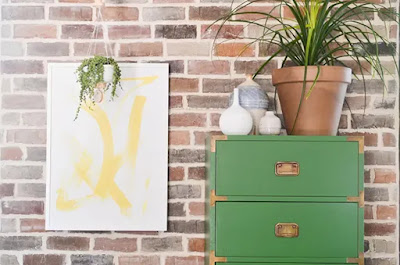We all cherish our beloved pets and prioritize their well-being, don't we? When it comes to selecting products for our homes, it's important to remember that our furry companions are more vulnerable to airborne and surface residue chemicals. Indoor air pollution can significantly affect the health of our pets. Let's explore some of the most prevalent sources of pollution and discover ways to eliminate or reduce their impact
Indoor air pollution poses a significant concern in every modern home. In fact, the air indoors often harbors a mixture of pollutants originating from numerous sources. Since our pets are typically smaller than humans and tend to spend more time indoors, they are especially vulnerable to the health issues that indoor air pollution can trigger. Being conscious of the origins of these contaminants and understanding how to mitigate them is a crucial step toward enhancing indoor air quality and safeguarding your pets' health.
Volatile Organic Compounds
Numerous household items contain volatile organic compounds (VOCs), substances that easily evaporate into the air. You can find these compounds in furnishings, solvents, aerosols, cleaning products, air fresheners, adhesives, sealants, pesticides, and dry cleaning chemicals.
In both dogs and cats, VOCs have the potential to induce eye, nasal, and throat irritation, provoke skin reactions, trigger headaches, nausea, dizziness, and fatigue. In more serious instances, exposure to VOCs may even lead to organ damage and an increased risk of cancer. Although the likelihood of encountering such severe consequences in a typical, well-maintained household is low, this underscores the hazardous nature of these chemicals.
Safer Options
The most straightforward method for reducing airborne VOC concentrations is to ensure proper and consistent ventilation. When weather conditions permit, open windows to allow fresh air circulation and remain cautious when using cleaning or removal products in your home. Pay special attention to heavy-duty removal products, as they may contain higher levels of VOCs that can be harmful if used without appropriate personal protective equipment. When tackling demanding removal tasks, consider opting for low VOC formulas such as Max Strip to help minimize VOC emissions.
LOW VOC REMOVAL PRODUCTS
The simplest way to lower the concentrations of VOCs in the air
is to ensure good, regular ventilation.
Naturally-occurring microbes
Mold, mildew, bacteria, and dust mites thrive in moist environments, and the airborne spores and waste products they release can pose health risks to both humans and animals.
Molds, mildew, and bacteria exposure can lead to symptoms such as coughing, sneezing, eye or nasal discharge, lethargy, paw licking, loss of appetite, and noisy or labored breathing. In addition, animals can develop allergies to house dust mites, which may manifest as itching, skin issues, and recurrent ear infections.
Safer Options
The most effective approach to maintaining low levels of mold, mildew, and bacteria in your home is to focus on reducing indoor humidity. Consider hanging your laundry outdoors or using a dryer that vents outside. Regularly empty drip trays in dryers and dehumidifiers, and change the water in AC units daily. Be vigilant in checking for pipe leaks or dripping taps.
For visible mold growth, ensure you clean it away promptly. To minimize dust, which is essential for dust mites to thrive, use a vacuum equipped with an HEPA filter. This not only helps reduce dust mites and their waste but also captures other airborne contaminants like pollen, smoke, spores, and soot.
Soft toys and other items that can’t be washed can be placed in a plastic bag in the freezer for
24 to 48 hours to kill dust mites.
Carbon Monoxide
There is also a potential risk of carbon monoxide exposure from appliances that utilize gas, coal, oil, or wood as their fuel source, such as furnaces, generators, fireplaces, wood burners, and motor vehicles that may be operating in nearby garages.
Carbon monoxide poses a severe threat to the health of dogs, cats, and humans alike. It can be fatal when present in high concentrations, but even low-level exposure can result in symptoms such as drowsiness, lethargy, shortness of breath, and even loss of consciousness.
Safer Options
Carbon monoxide is a silent threat to both pets and people, making it crucial to install alarms near furnaces and other heating appliances. Ensure that wood burners are adequately sealed and avoid burning timber that has undergone chemical treatment. It's essential to regularly service and maintain furnaces and heating systems, even if they are new. Additionally, keep chimneys well-swept and flues in good condition, conducting frequent checks for any cracks.
Carbon monoxide is a silent killer of both pets and people, making it crucial to install alarms
near furnaces and other heating appliances.
While it's impossible to eliminate all indoor air pollution, taking steps to reduce it to acceptable levels is feasible. Being mindful of the chemicals you introduce into your home, maintaining cleanliness by reducing clutter, and ensuring proper room ventilation are all crucial in ensuring clean air for both you and your pets to breathe.










































